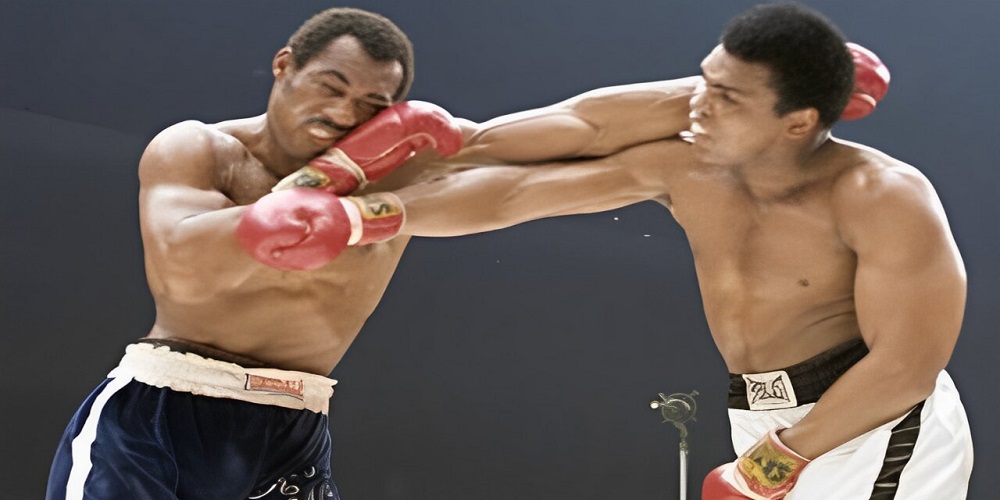On September 10, 1973, the second of three encounters between the great Muhammad Ali and one of his toughest opponents, the rugged Ken Norton, took place. A rematch that remained closely contested until the final bell, between two fighters who had already met just over five months earlier. On that occasion, it was Norton who prevailed, ending Ali’s streak of ten consecutive victories that had begun after his crushing defeat at the hands of Joe Frazier.
Frazier had denied him the chance to regain the world title upon his return from the enforced layoff due to his refusal to enlist for the Vietnam War. The Greatest was therefore gradually trying to climb back to the top of the rankings to earn another shot at the title. Norton, for his part, had come to the first fight with Ali with a record lacking big names, tarnished by an unexpected loss inside the distance to the unknown Venezuelan Jose Luis Garcia.
Ali’s defeat, fighting much of the fight with a broken jaw from one of Norton’s punches, caused a massive stir. The rematch was quickly organized: another loss could have significantly slowed Ali’s climb back to the world title, which had meanwhile passed into the hands of George Foreman; a win would repair the damage and get him back on track.
Muhammad Ali stepped into the ring in top form. Weighing in at 212 pounds, it was his lightest since his fight against Oscar Bonavena in December 1970. Aware of the danger posed by Norton’s sharp, explosive punches, The Greatest knew he needed to move with agility and avoid becoming a stationary target in order to win.
The early stages of the fight were a masterclass in grace, elegance, and skill by Ali. The Louisville Lip danced around his opponent with the lightness of his prime, continuously peppering him with his lightning-fast jab and cleverly clinching when cornered. Norton initially focused almost exclusively on body shots, attempting to slow down the more decorated fighter and make him an easier target.
In a sense, Ken Norton’s fight began in the closing moments of the fourth round, when he landed a sudden and rather violent right hand, signaling to everyone that he wasn’t there to be Ali’s sparring partner. The fifth round was balanced, with Norton gaining the upper hand due to his increasingly frequent flurries, while the sixth was spectacular, as both fighters traded their best shots, with Ali pulling off some textbook dodges.
By the halfway mark, The Greatest was clearly ahead, but Norton had no intention of giving up. Starting from the seventh round, one of the Illinois fighter’s best, Norton unleashed his aggression, relentlessly attacking, pinning Ali to the ropes, and alternating shots to the head and body without letting up.
For at least three rounds, Ali struggled to find an answer to Norton’s wild assault, unable to shake off his furious opponent. Eventually, he realized that his only chance of surviving was to trade finesse for power, as only by landing a few heavy punches could he cool Norton’s temper. Two quick right hands caught Norton, who didn’t have a great chin, during the tenth round, slowing his relentless advance.
Norton could have still turned the fight around by winning the last two rounds, and he was certainly aware of it. He went all out, throwing punches wildly after the bell for the eleventh round, but Ali weathered the storm while Norton began to tire. The Greatest, on the other hand, still had energy left. The final, decisive round was another showcase for Ali, who, with fast combinations, precise dodges, and sublime movement, secured a narrow but fair victory, despite Norton’s desperate final push.
The split decision by the judges, awarding Ali the win by a hair, reflects the close contest seen in the ring. From a modern scoring perspective, I would give Ali a 115-113 victory, but many rounds were incredibly difficult to judge. It’s no surprise that after the fight, Ali described Norton as “the best fighter I ever faced.”
Muhammad Ali gained momentum from the win, regaining his lost confidence. Four and a half months later, he would get his revenge against Joe Frazier, before heading into the legendary “Rumble in the Jungle” against George Foreman with renewed conviction. Ken Norton, despite the loss, immediately got his shot at the world title, but due to his weak chin, he was dismantled by Foreman in just two rounds. He recovered from that setback, remaining competitive at the highest levels until 1978, when after a memorable fight against Larry Holmes, which he lost by the narrowest of margins, he began his decline.
Norton and Ali would meet again for a third time in September 1976. A slower, heavier Ali, already past his prime, was controversially awarded the decision by the judges, a verdict disputed by many experts. But that is another story.

